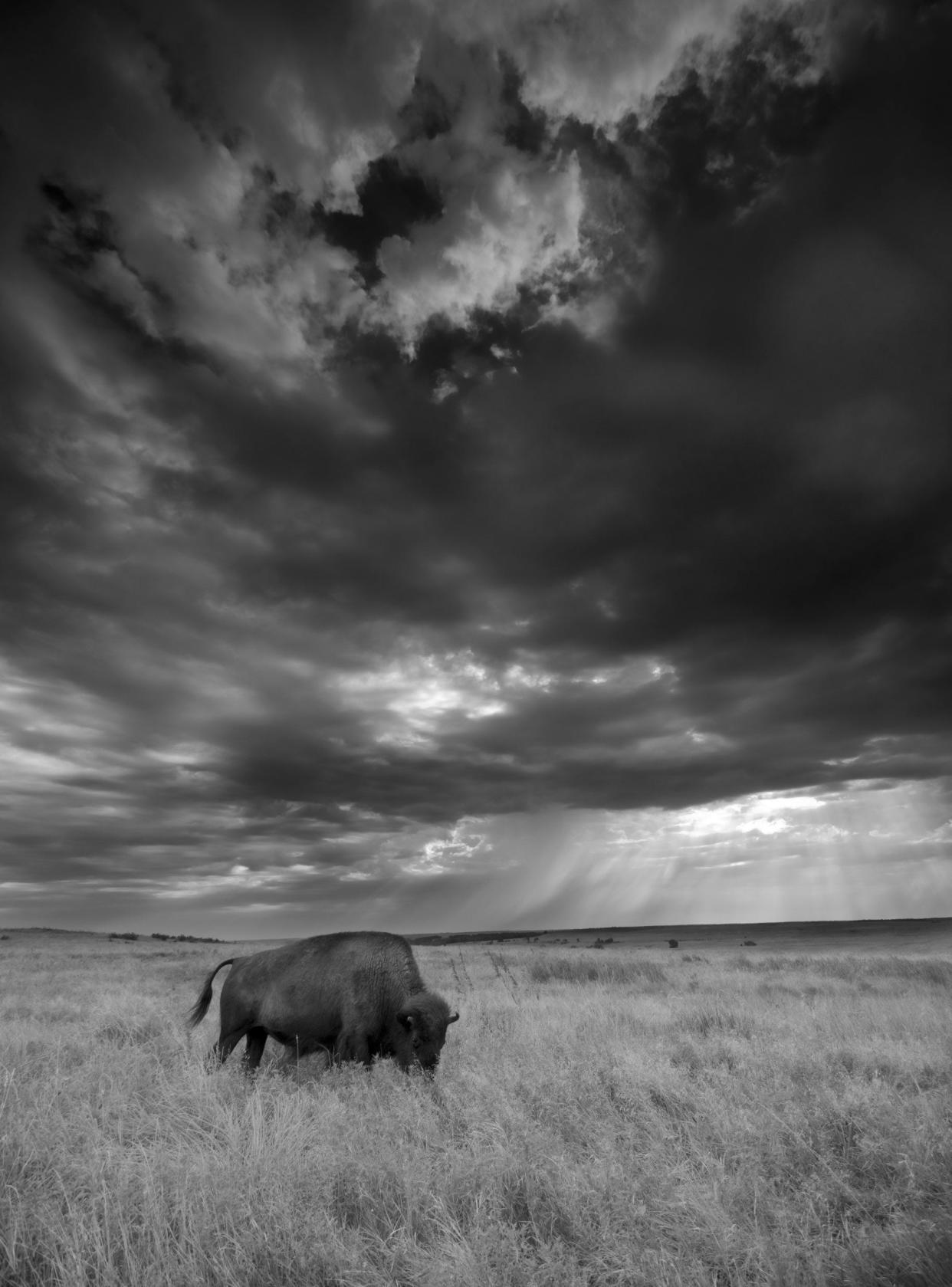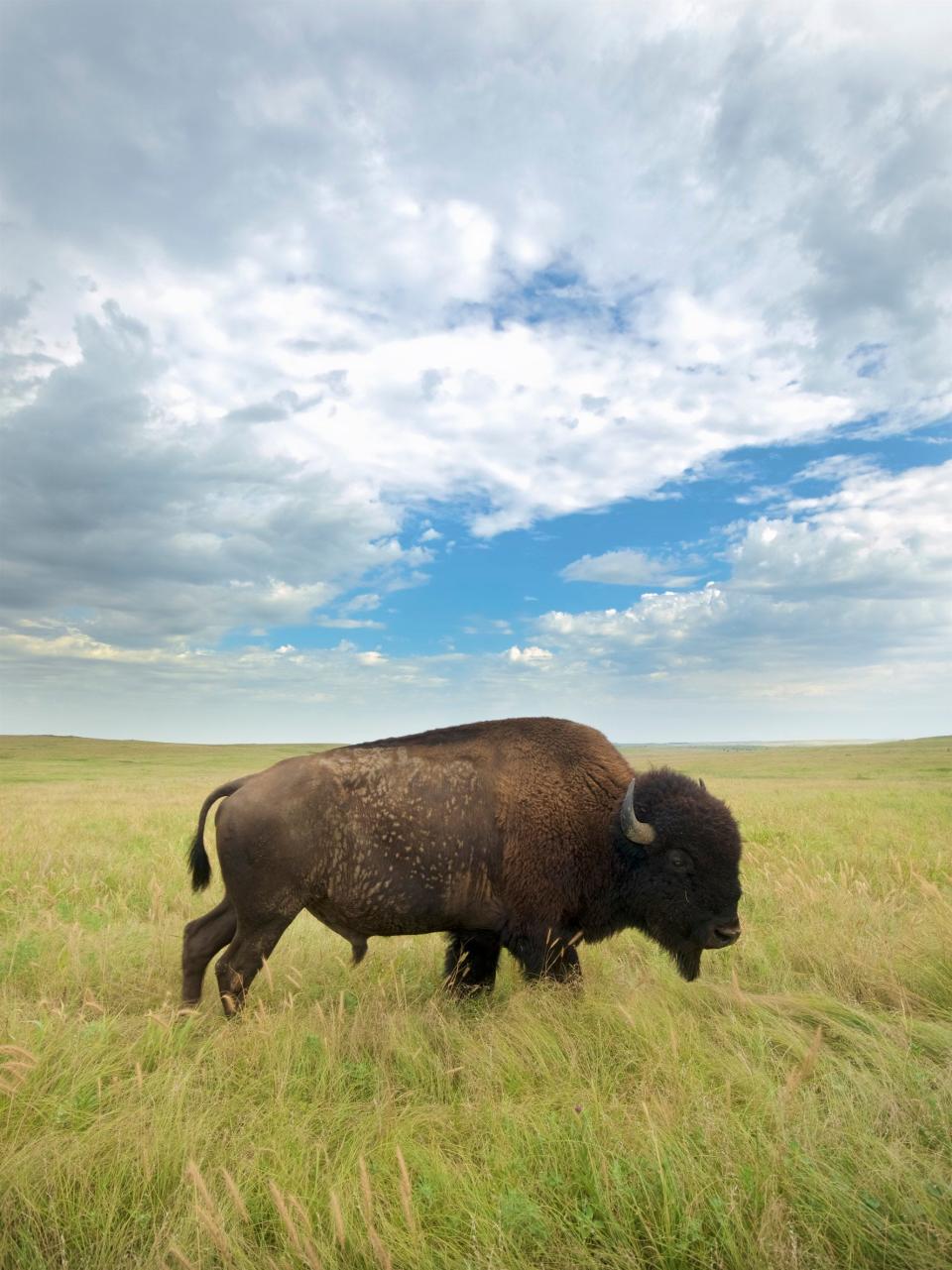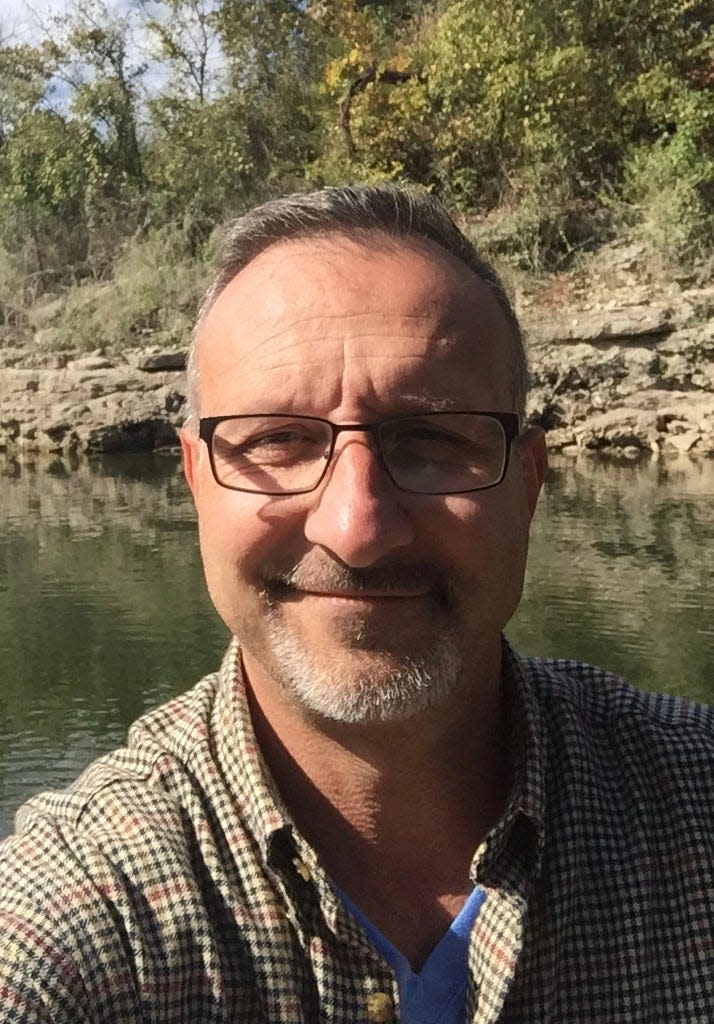Once thought to be a tool for prairie conservation, the thinking about bison has changed

I sat in my car one recent morning, photographing bison as the sun came up at The Nature Conservancy’s Joseph H. Williams Tallgrass Prairie Preserve in Osage County. In these still moments I catch myself in awe of what the Native Americans must’ve experienced 250 years ago. I’m quite fortunate to know firsthand that sitting on the open prairie at sunrise surrounded by a few thousand bison is a truly humbling experience. Even so, seeing a herd of millions stretching from horizon to horizon on a seemingly endless prairie must have been life-changing. This realization probably explains my mind’s ephemeral trips to this place and time that is now lost forever.
The American bison, or buffalo as many refer to this iconic beast, once inhabited North America from what is now Canada to Mexico. They numbered in the tens of millions with some estimates suggesting 60 million or more. Not only were they a cultural staple for many Indigenous peoples and their survival, but they also played an essential role in shaping the quintessential American landscape, the prairie. In fact, without bison and fire, the prairie would have evolved to be something entirely different.
Despite their importance to both people and nature, the bison, like so many natural resources of the American West, was thought to be in endless supply and nearly wiped out. Not only did we slaughter tens of millions of these animals and reduce their numbers to less than a thousand, all in the name of greed, ignorance and a concerted effort to remove Native Americans, we sadly did it over the course of just a single generation.
If it weren’t for a few forward-thinking individuals, like William Temple Hornaday, we might not have any bison remaining. Hornaday, fearing the almost certain extinction of this once numerous species, ventured a trip to Montana in 1886 to collect specimens for the National Museum. He was dismayed to see so few bison relative to just a few years earlier. Upon his return, he dedicated the rest of his life to saving the species from extinction. His first action was to bring live animals to Washington, D.C., followed by co-founding American Bison Society at the Bronx Zoo with Theodore Roosevelt. The first 15 animals that resulted from the zoo’s breeding program made a trip to Oklahoma to what is now the Wichita Mountains National Wildlife Refuge.
Once thought to simply be more of a tool for prairie conservation, the thinking about this animal has changed. To save the prairie, each of its components must be conserved — making bison a priority. As conservationist Aldo Leopold said, “If the biota, over the course of Aeons has built something we like but do not understand, then who but a fool would discard seemingly useless parts?”

Conserving the bison is an important part of ongoing conservation efforts here in the United States. The national mammal is an important part of our cultural and natural history. But as is the case with any species, its true conservation hinges on the habitat in which it thrives. Perhaps one of the few stories sadder than that of the American bison, is that of the often-overlooked obliteration of our prairies in North America. Temperate grasslands worldwide are the most converted, least protected habitat on the planet. Our own tallgrass prairies, which once covered more than 100 million acres, have been decimated. Less than 5% of this ecosystem remains today — mostly found in Oklahoma and Kansas.
What all this means is that to conserve America’s favorite mammal, we must think about its habitat. We cannot have one without the other. As Oklahomans, we can all do our part to save this truly American pair, which is such an important part of our state’s history. Support conservation work here in Oklahoma. Conserving land is our best bet to protect more prairie habitat, so that future generations will have the opportunity to experience the silhouettes of the majestic bison at sunrise. What’s more American than that?

Mike Fuhr is state director of The Nature Conservancy – Oklahoma Chapter. The Nature Conservancy owns more than 100,000 acres in Oklahoma, including the Joseph H. Williams Tallgrass Prairie Preserve in Osage County. More than 2,000 wild bison roam the preserve’s 60 square miles. www.nature.org/oklahoma
This article originally appeared on Oklahoman: What's more American than the bison and the Oklahoma prairie?

